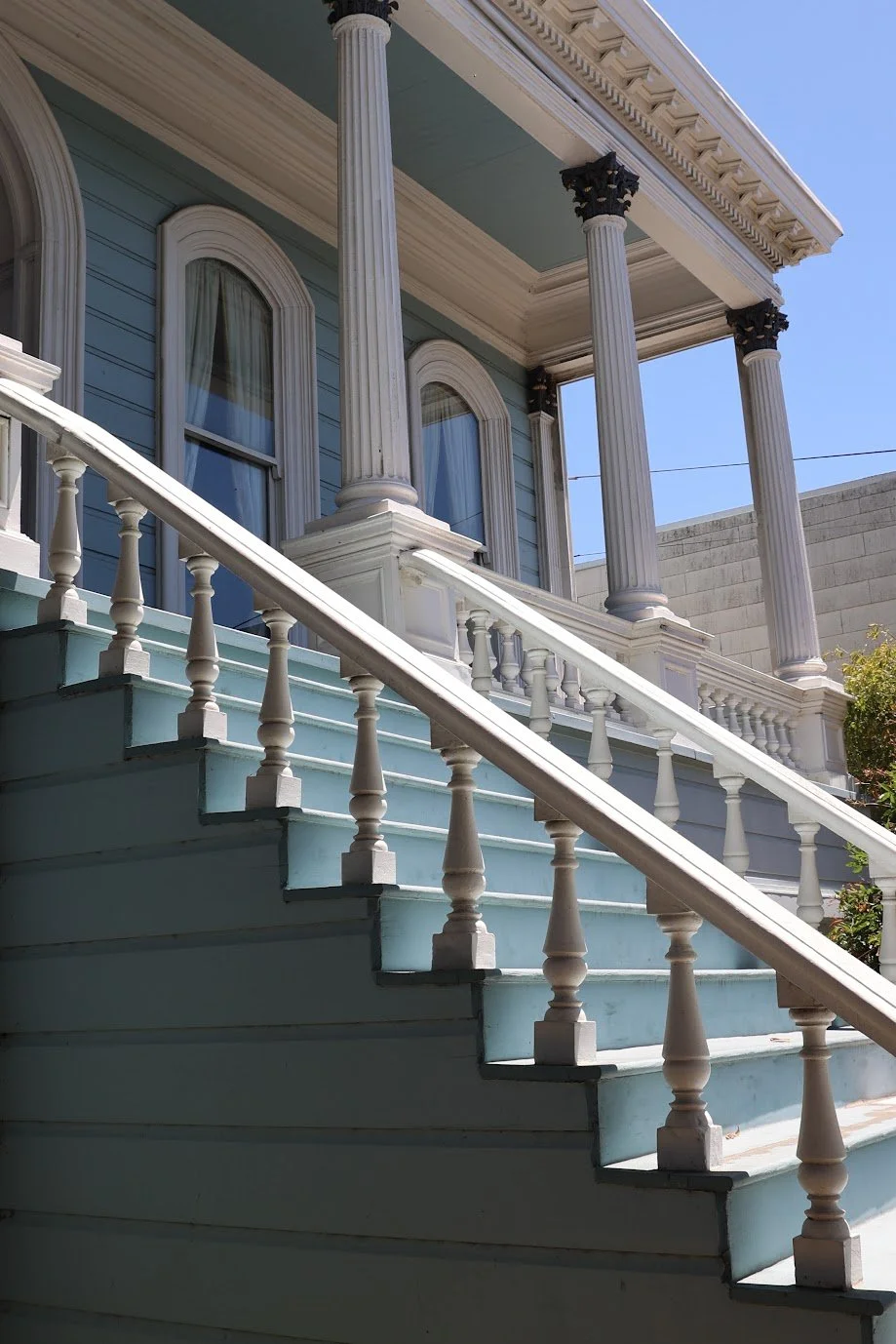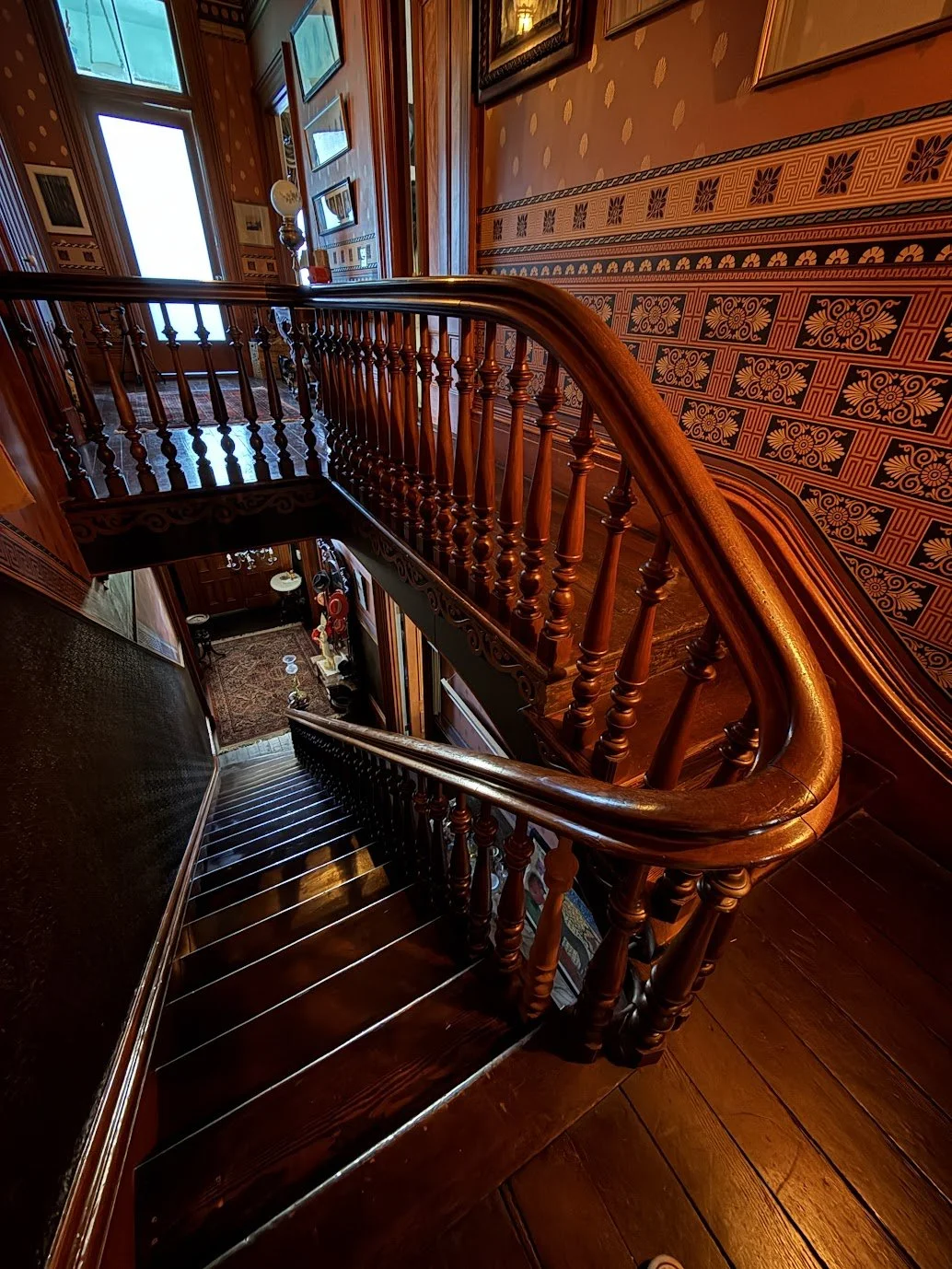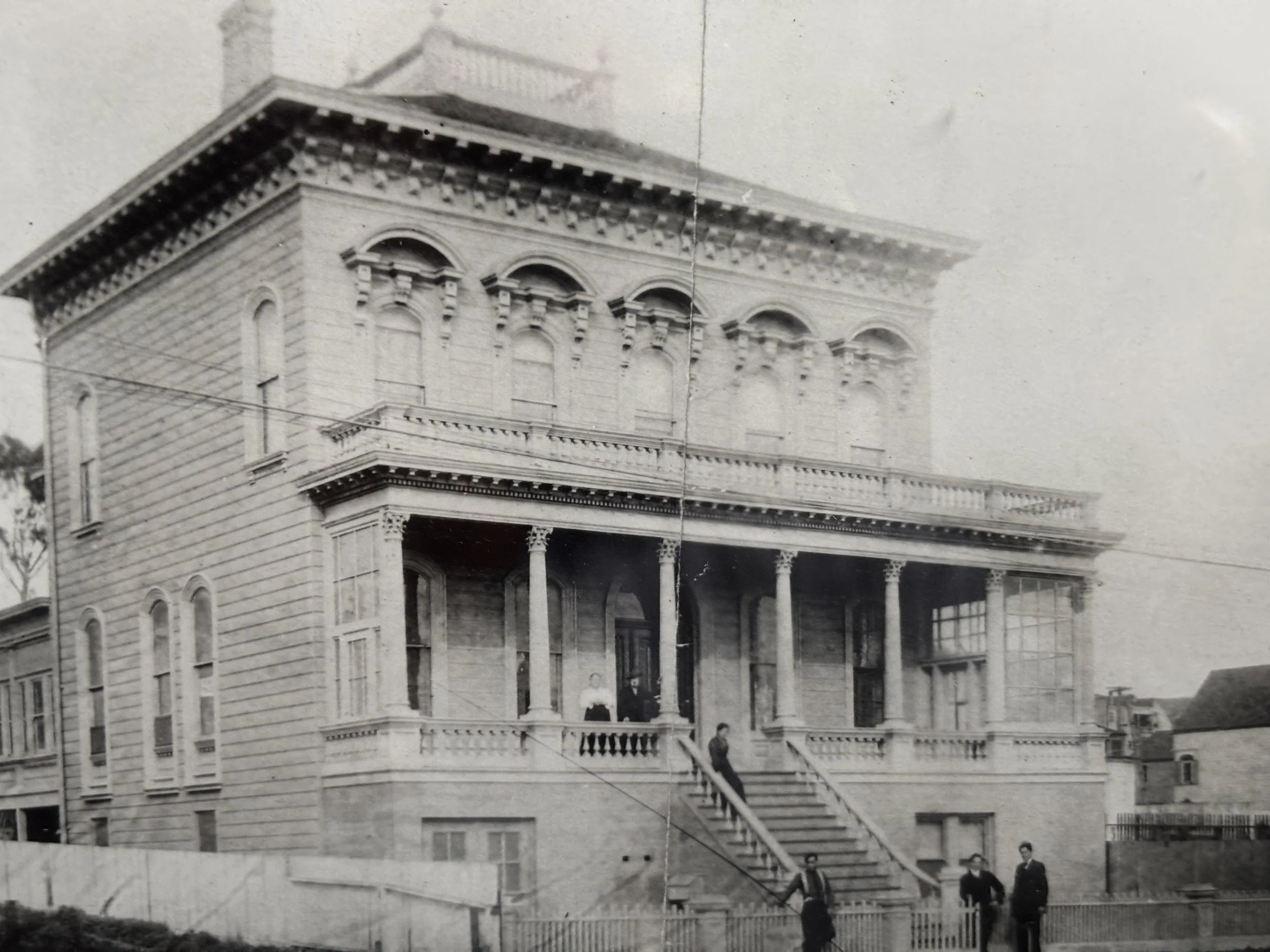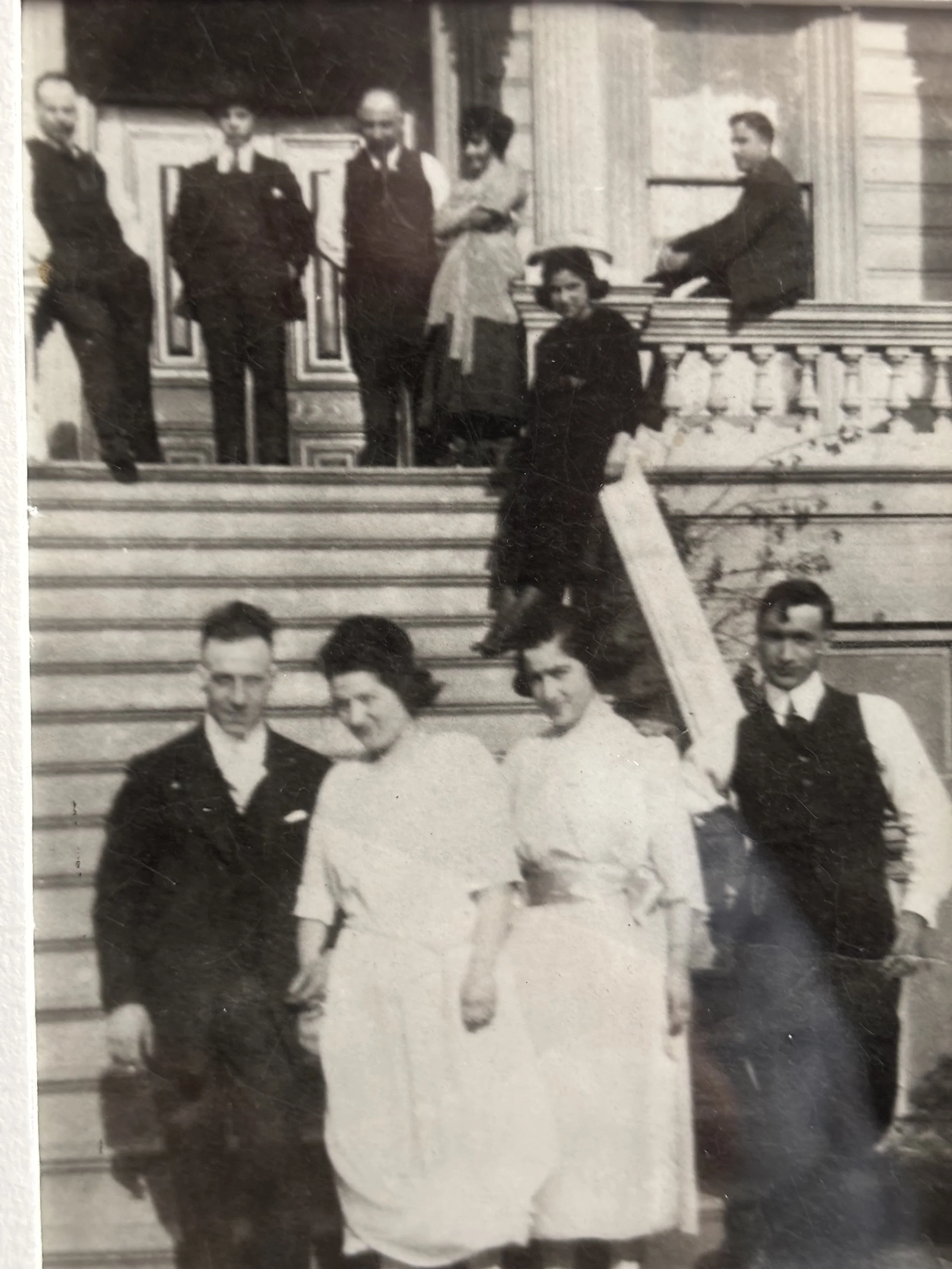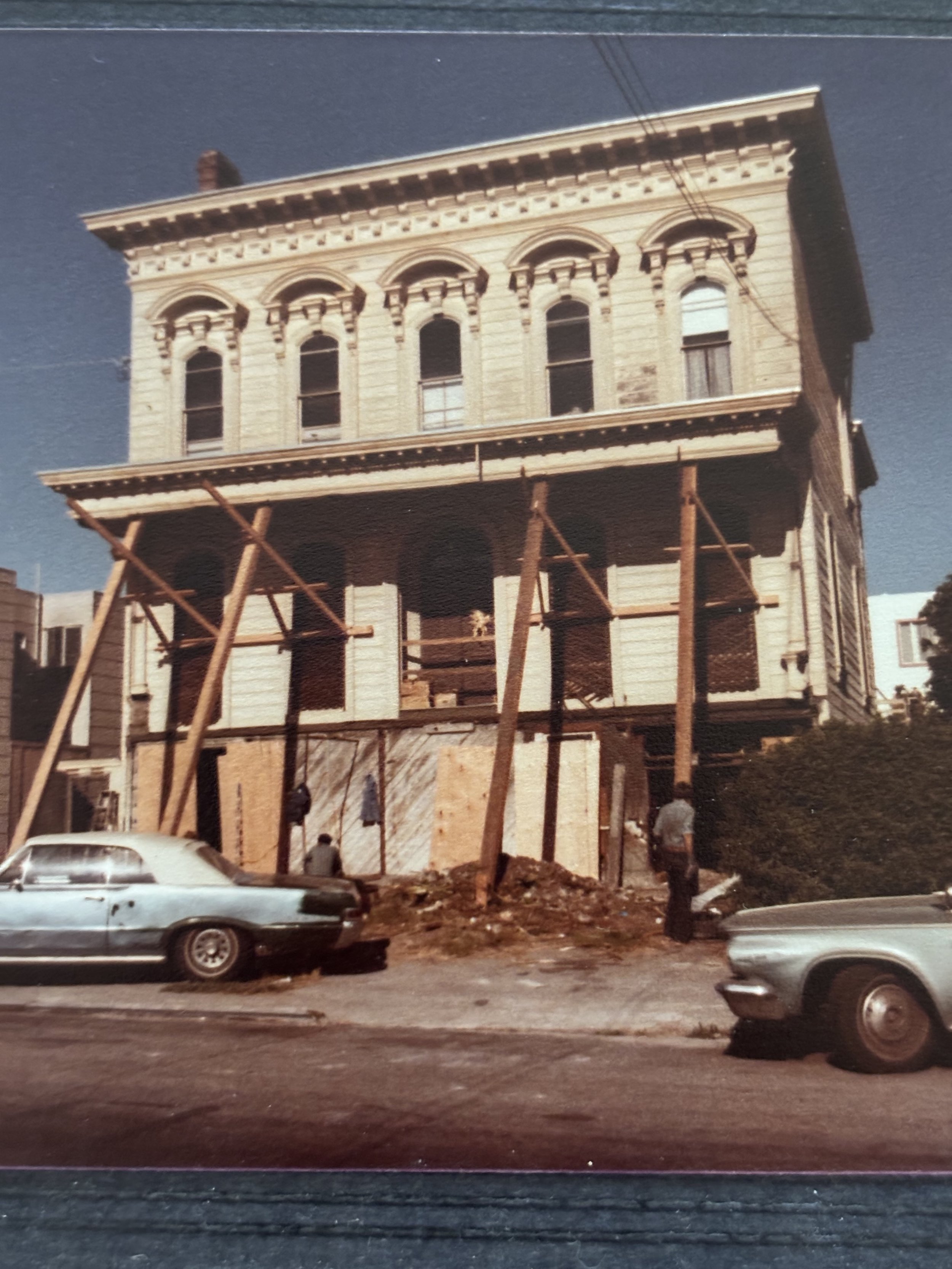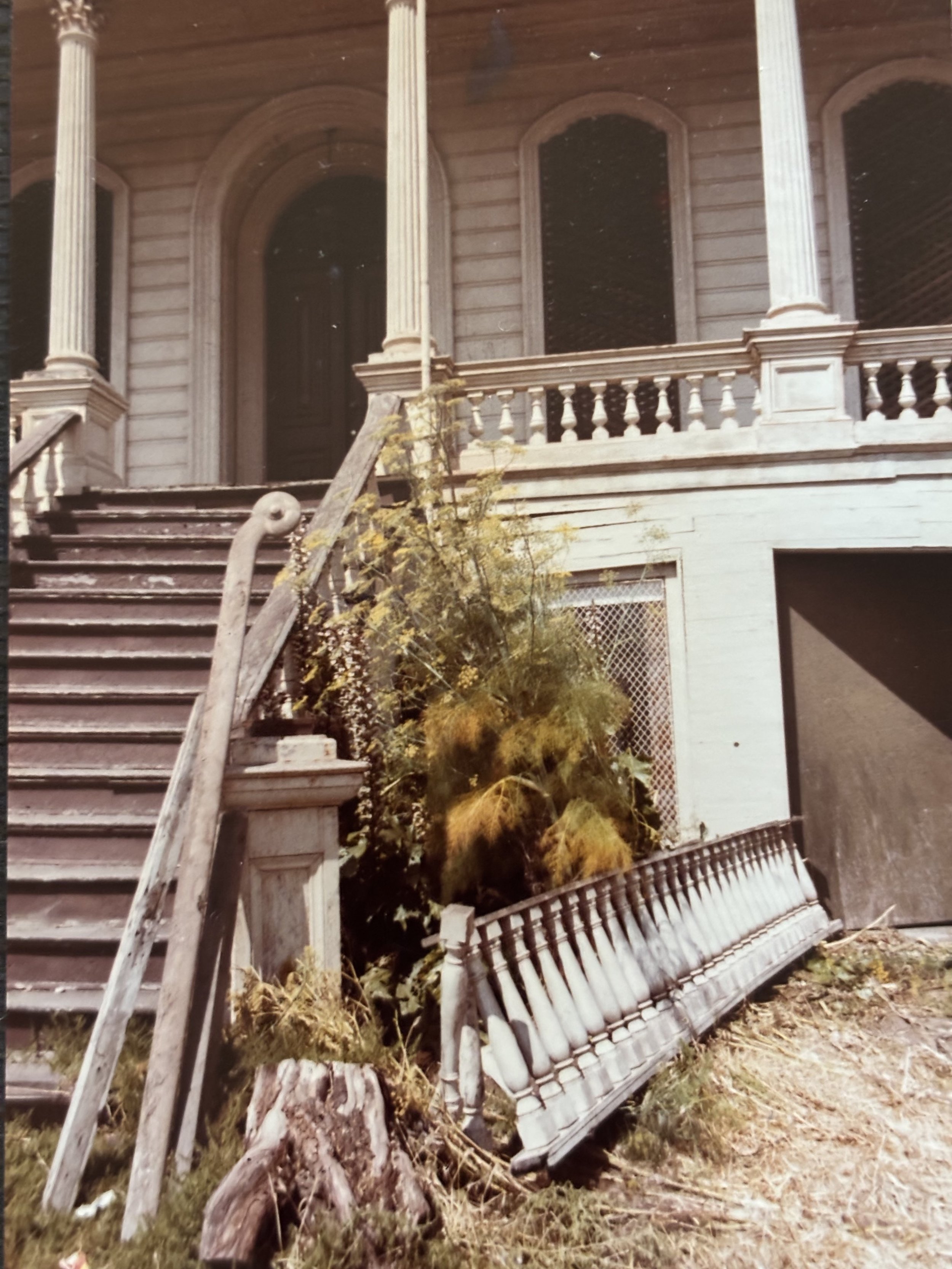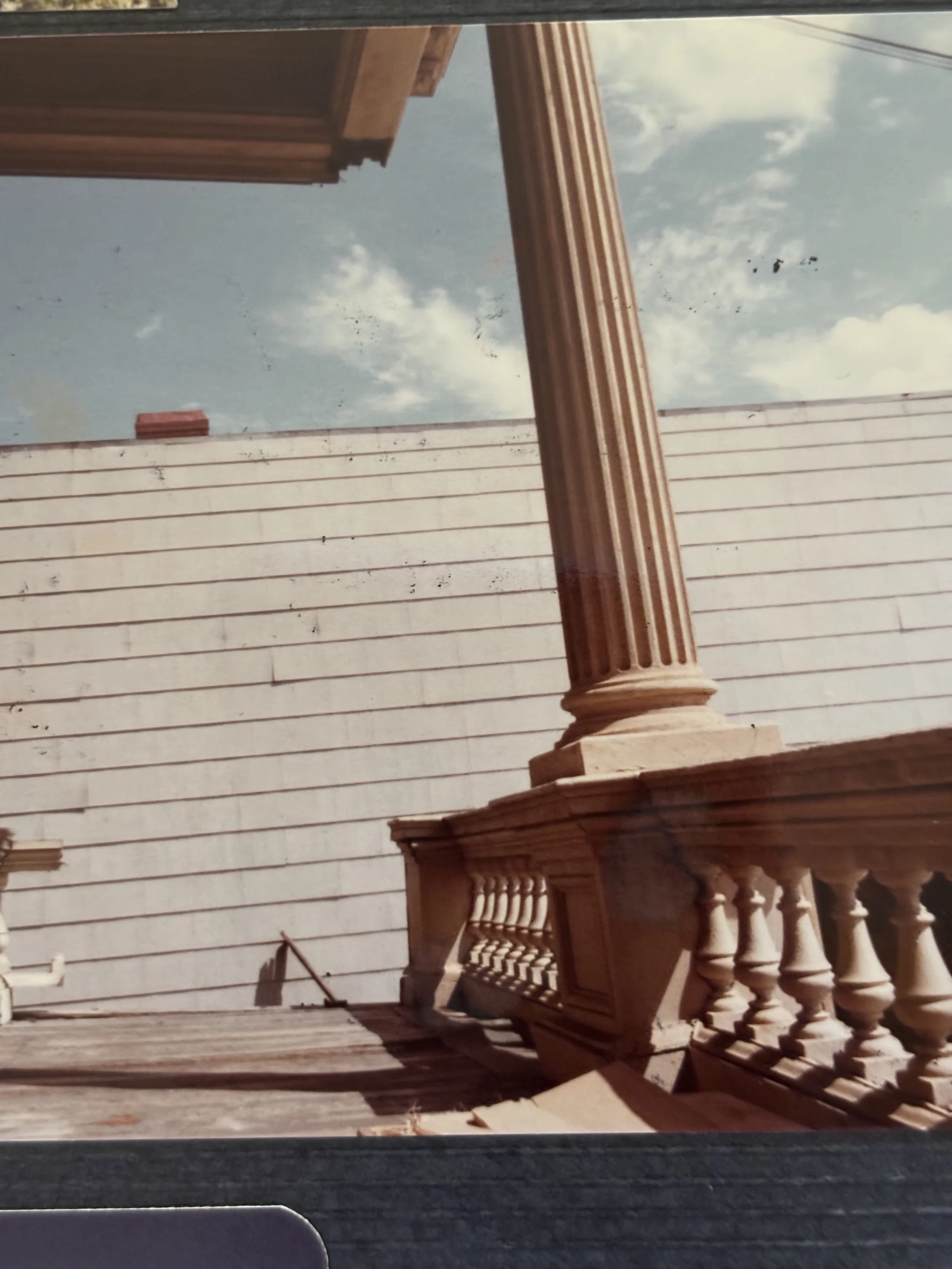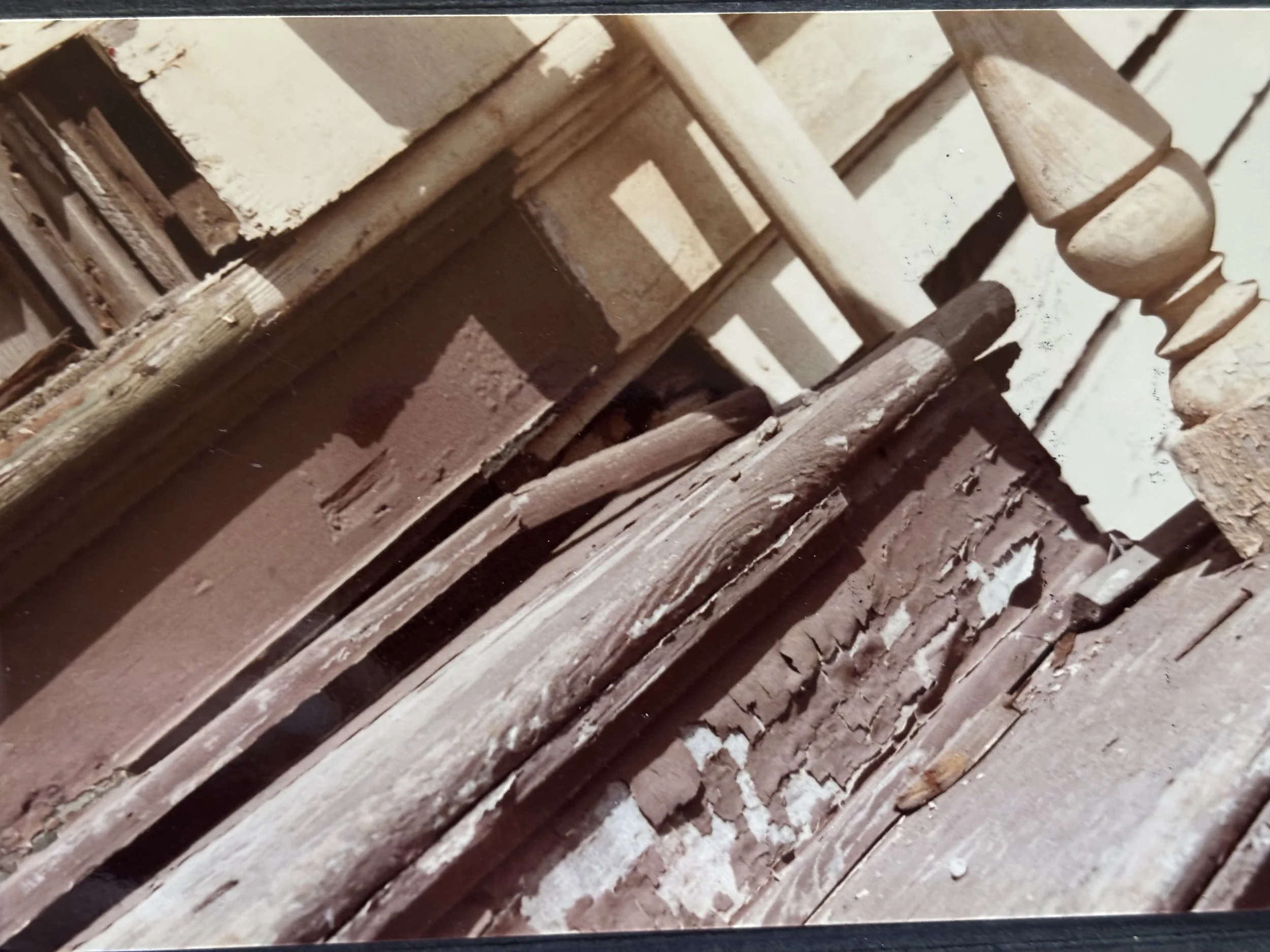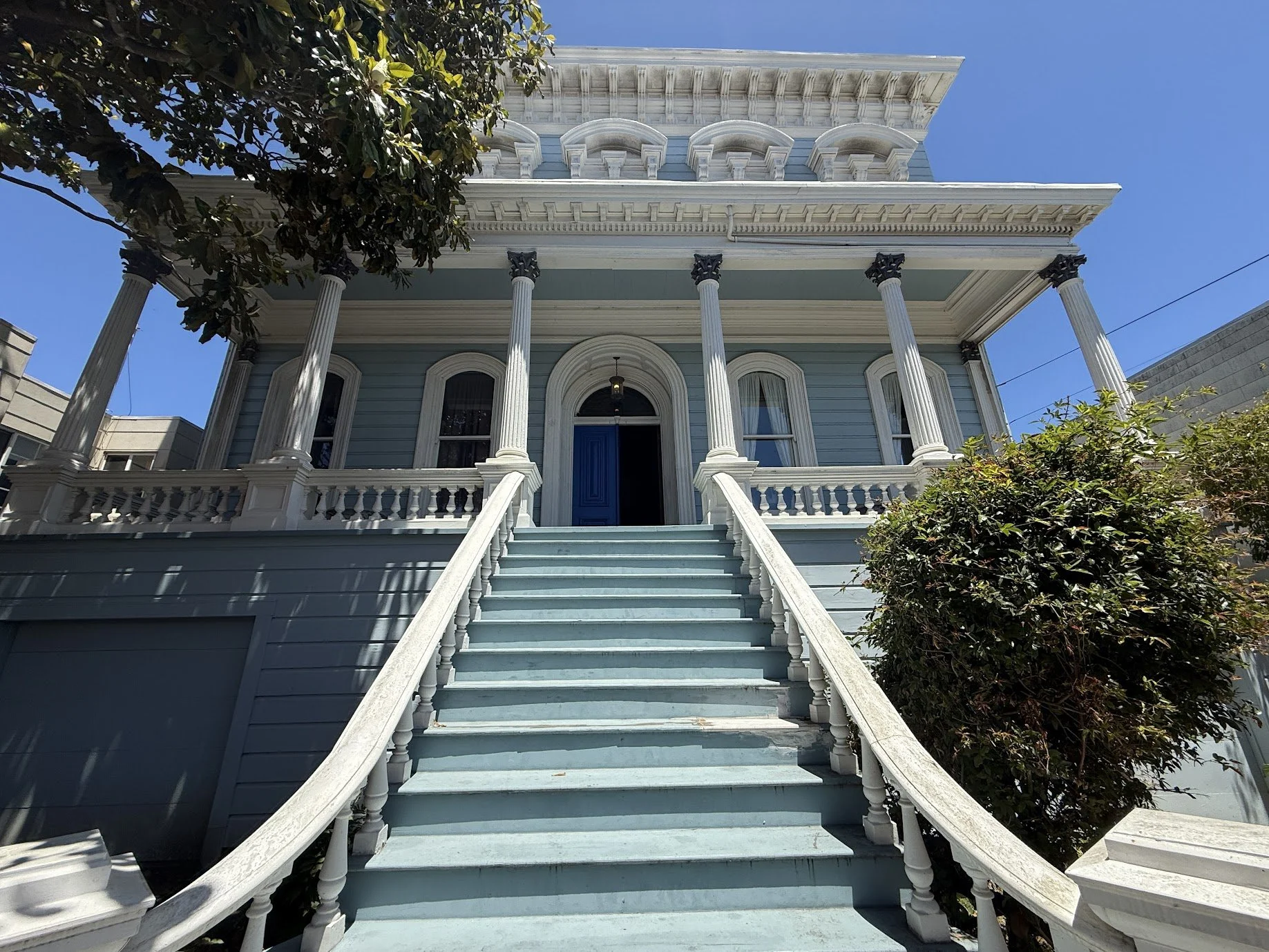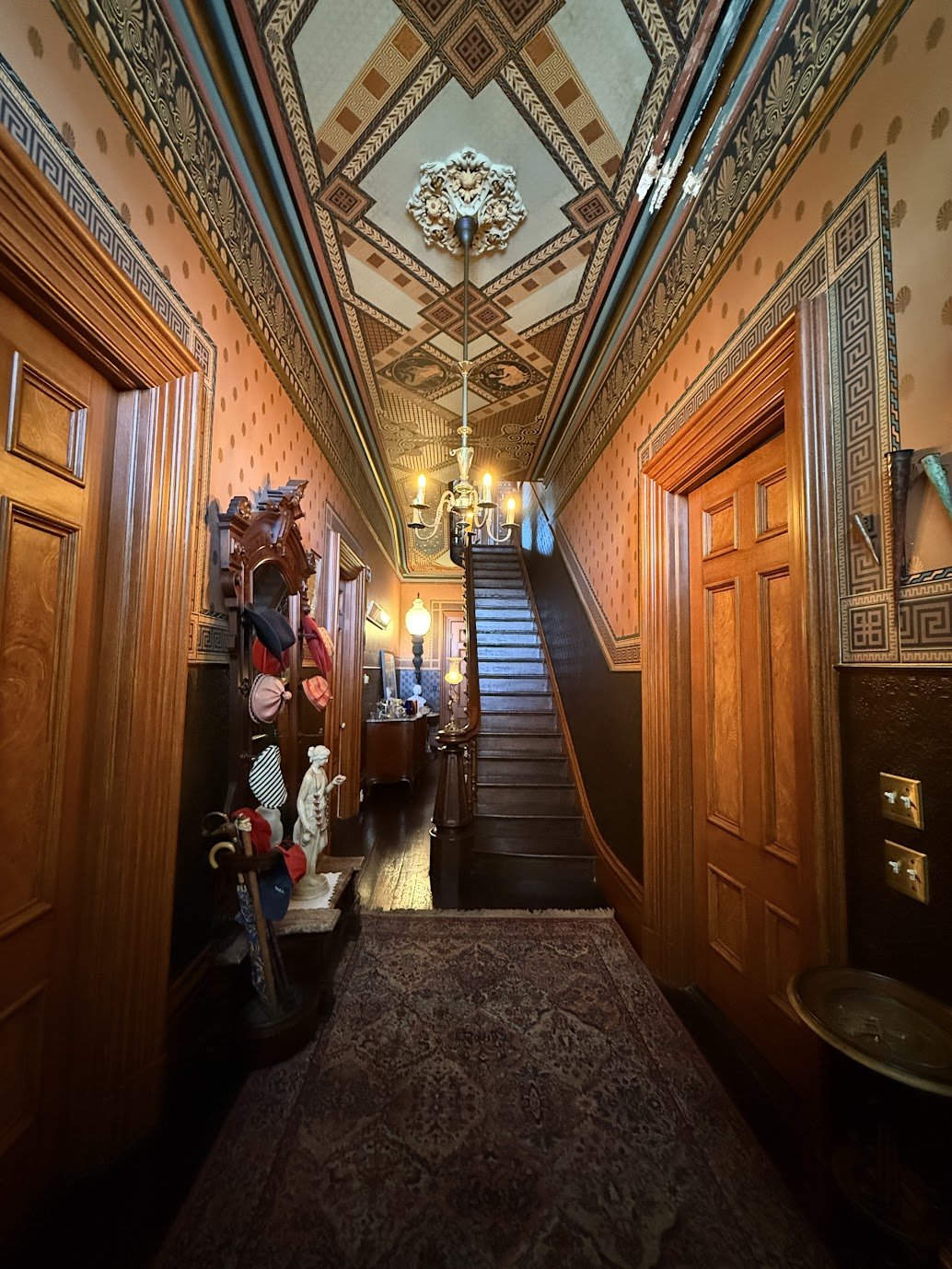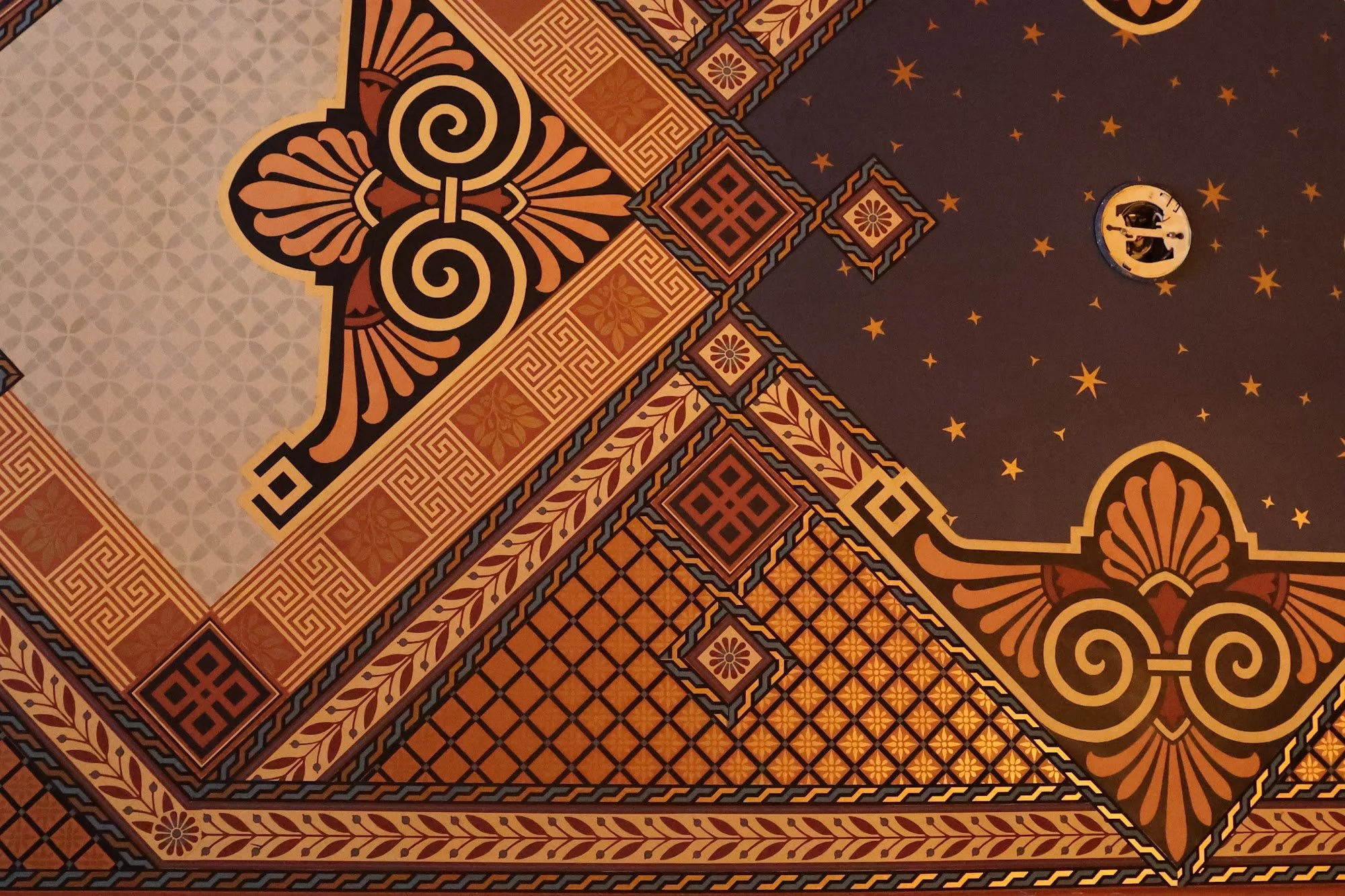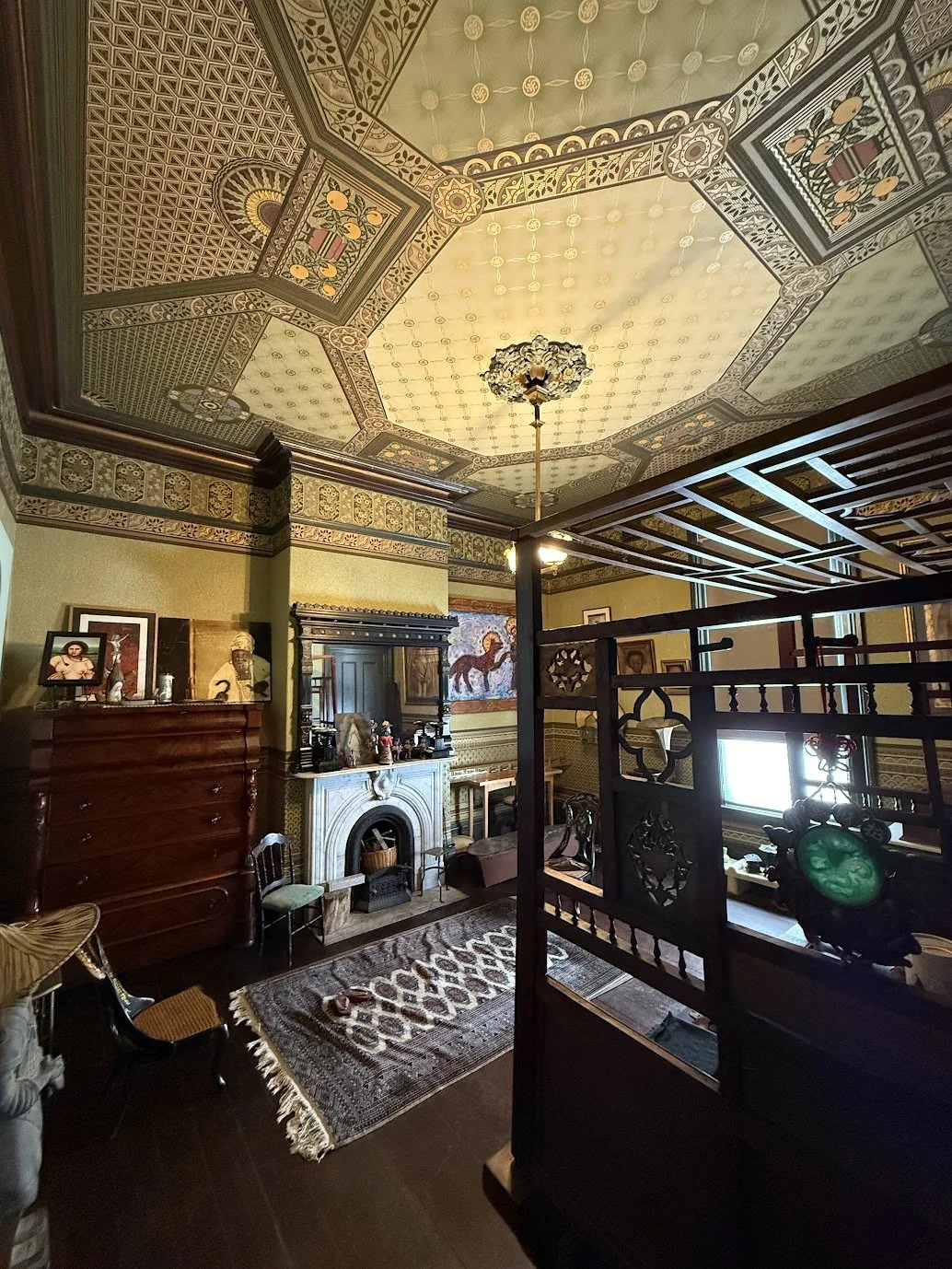THE HISTORY
… is revealed within
This grand Italianate Victorian was constructed between 1865-1870 by prominent post-Gold Rush house builder Stephen L. Piper for Daniel Sylvester (b. Hessen, Germany, 1832), his wife Maria (Donnelly) (b. New Orleans, 1846), and their eight children. The home served as the 'farmhouse' for a cattle ranch which included the mansion and a number of stable and out-buildings, a few of which can still be seen in the area. Piper later constructed the 'South San Francisco Opera House' ca. 1880, (Henry Geilfuss, architect), now known as the BayView Opera House, on the old stagecoach line, renamed Railroad Avenue in 1878; Third Street since 1921.
1850-1890
At the turn of the century the Southern bay-shore area of San Francisco was a diverse community of Italian, French, Maltese, German, Irish and Chinese immigrants and their descendants. French laundries and tanneries shared Railroad Avenue with Italian bakers and butchers. German-born brothers, Daniel and John Sylvester, arriving in San Francisco in 1851, were wholesale butchers, originally located at 3 Taylor Street and later, cattle dealers at First Avenue South (now Evans Avenue) in the former ‘Butcher’s Reservation’ or ‘Butchertown’. Other German and Scandinavian immigrants worked the nearby shipyard- founded in 1871; a Chinese community thrived near Hunter's Point, operating a dozen shrimp-camps at India Basin- 1870-1936. The Bayview Racetrack, funded by George Hearst and developed by Leland Stanford and Charles Crocker in 1867, entertained San Franciscans who rode the horse-drawn, Bayview-Potrero Railroad from 'the City' (Montgomery at Post) station via the Long Bridge (a plank road across Mission Bay) to the Victorian grandstands then located near the present day Third Street @ Williams Avenue.
More: https://bayview-hunterspoint.org/bvhp-history
inset photo (ca. 1873) Just five blocks from The Sylvester House, The Bayview Hotel/Racetrack was constructed in 1867 at Railroad Avenue/Italian Gardens (now 3rd Street/Willams); lost to fire ca. 1884
1890-1910
Though the family thrived and the butcher and cattle operations grew, the family trajectory shifted after Daniel Sylvester was gored by a steer, with the resulting infection causing his death in 1897. Several Sylvester family members continued to occupy the home until 1901.
Although primarily rural, sparsely populated and largely unaffected by the 1906 earthquake, the Bayview district nevertheless shed the 19th Century 'country lane' names attached to its roadways and took on the sub-division designation of East-West numbered avenues and North-South lettered streets. The Sylvester House, originally built on sandy 17th Avenue (formerly Sumatra Road, between Savanna and Platte Streets- becoming ‘K’ and ‘L’ streets) had entered the 20th century.
1915-1954
The Sylvester family sold the home in 1913 for $100 to boat builder, GianBautista Faggione, (b. LaSpezia (Genoa), Italy 1871), who moved the building downhill, one-half block to the south at 1556 Eighteenth Avenue South between 'K' and 'L' (now Revere Avenue between Keith and Lane streets), added the concrete basement or ground floor as a wine making operation, and occupied the building with his four sons. Silvio Faggione, third son, an artist, maintained a studio in the attic of the house and completed the 'Rosebud' painting and the decorative stencil and frieze work seen in the 'ballroom'. Along with brother Augusto ‘Gus’, an architectural and decorative painter, he completed the interiors of numerous bank and civic buildings of the era, including the Avenue and Castro theaters, the Bayview Opera House and the original Bank of Italy building (Montgomery/Clay) in San Francisco.
Photographs of the Faggione family between 1911-1935
1963-1977
By 1966, the house was vacant when a third owner purchased the property for $10,000. Although thankfully resisting the temptation to part with the original marble fireplaces, doors or mouldings, the property nevertheless continued to deteriorate, falling into significant disrepair due to overall neglect.
1978-present day
In 1978, the Sylvester House was sold to the current occupants, who embarked upon a four-decades-long, dedicated and faithful restoration including upgrades or replacement of all systems, significant decorative enhancements, with added furnishing and art collections. Craftspersons from Artistic License, a guild of , based in San Francisco, along with other highly talented individuals, assisted in the resoration.
The restored architectural gem as seen today is a testament to the vision and creative spirit of her current owner, Linda Blacketer, who was recognized by San Francisco Beautiful with the Robert C. Friese Preservation Award in 2005. The Sylvester House is one of a handful of rare, early and continually inhabited single family Victorian dwellings in San Francisco and celebrated its Historic Landmark status and 155th birthday in A.D. 2020.
